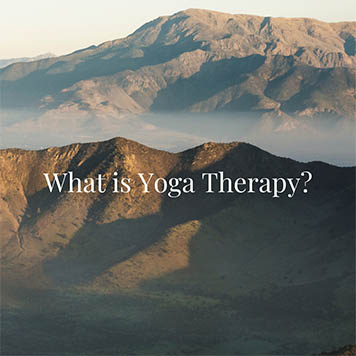For at least the past 2000 years, the two main practices of Yoga have been conscious breathing (prāṇāyāma) and meditation (samādhi). Meditation is the means of liberation and breathing is one of the quickest, most efficient means of shifting the state of mind and functioning of the body. In fact, breathing is considered the best preparation for meditation. Over the centuries, Yoga developed a huge number of breathing techniques and categorized them according to their effects on the body and mind.
YOGIC BREATHING: WHAT IS YOGA FOR BREATHING?
Breathing practices, known as prāṇāyāma, have an immense influence on the shape and structure of the body. As one inhales and draws the breath into the body, the entire trunk expands including the chest, back, ribs and abdomen. If done properly, the spine will also lengthen, an effect which is of primary importance in the practice of Yoga.
Conversely, as one exhales and consciously expels the breath from the body, it is possible with proper technique, to use the body’s changes to further lengthen the spine as well as influence the body’s digestive and eliminative functions (among others). Doing this properly involves a lot of different pieces within the body, and working with each part is a skill that requires effort and attention over time to develop. Yoga for breathing is the process of developing these skills through the use of different Yoga movements and techniques.
THE BREATHING PROCESS AS A CONTINUUM
In understanding this process, it is helpful to recognize that all yoga techniques can be arranged on a continuum according to their function. At one end of the continuum are the techniques that are the easiest to access while on the other end are the most difficult techniques. The difference between the two ends is the number of skills required in order to do that particular technique. Difficult techniques are difficult because they require competency in several different movements or skills at once. In this way, techniques build upon each other, and it is possible for a practitioner to gradually progress each time they get more skilled at any technique.
THE EXHALE PROCESS
To understand these principles, let’s look at the exhale. The exhale is commonly recommended as a beginning place for working with breathing. An exhale continuum might begin with putting the hands on the lower abdomen in a lying position and watching the breath, then consciously drawing in the abdomen with each exhale. A middle-range technique on such a continuum would be drawing in the parts of the lower abdomen in a specific order, with emphasis on four different abdominal areas, and doing so while seated. And toward the advanced end of the continuum would be integrating bandhas (energetic body-locks) by doing mūla bandha and uḍḍīyāna bandha in the āsana (posture) called mahāmudrā. As we move down the continuum the more advanced steps are built upon and require skill in the previous steps. Remember this is only an example, there are many other techniques on this continuum, both prior to the ‘beginning step’ and after the ‘end step’ we’ve listed.
Some useful ways to prepare the different steps of exhale are in forward bends like uttānāsana (standing forward bend), paścimatānāsana (seated forward bend), and januśīrṣāsana (seated head-to-knee-pose). Assuming that the student has a conscious connection to their lower abdomen, and is able to draw the lower abdomen towards the spine as they exhale, these positions are great places to refine exhale-related skills.
Exercise for the Exhale – Early
Lie on your back on a supportive, flat surface. Adjust your legs so that they are in a comfortable position. Put the palm of one hand below the navel, directly on the skin. Feel the warmth of the palm in that area of the body and take several slow breaths. After 4 or 5 slow breaths, as you exhale gently draw the area where you feel the warmth of the palm towards the spine. Try to make each exhale slightly longer than the previous one until you come to a comfortable maximum. Start over from the beginning and repeat the entire exercise three times.
Exercise for the Exhale – Medium
Lie on your back on a supportive, flat surface. Adjust your legs so that they are in a comfortable position. Bring the tips of both index fingers (1st fingers) together at the navel and let the other fingers fan out over the lower abdomen. Take several long, slow breaths feeling the movement of the abdomen at the tips of the fingers. After 4 to 5 slow breaths, as you exhale gently draw the abdomen toward the spine. Do this by initiating the movement as low in the abdomen as you can. As the exhale continues, gradually draw the entire area of the abdomen toward the spine, not in a single movement, but by gradually letting the place of initiation move upward toward the navel. Try to make each exhale slightly longer than the previous one until you come to a comfortable maximum. Start over and repeat the entire exercise three times.
CONCLUSION
These are a sample of very rich and complex ideas about the yogic breathing process and how to improve and extend the breath. As these examples make clear, the relationship between the breath and the body is very involved. These breathing exercises serve as a basis for understanding how Yoga movements are connected to the breath and, ultimately, prepare the student for prāṇāyāma and meditation.
“However beautifully we carry out an āsana, however flexible our body may be, if we do not achieve the integration of body, breath, and mind we cannot claim that what we are doing is yoga.” -T.K.V. Desikachar
If you are interested in experiencing the influence of your breath in practice, join us every Thursday morning for 15 Minute Breathing and Meditation. In this offering we explore Yoga for breathing by focusing on short, simple and accessible, yet powerful, breathing and meditation practices that explore a broad range of techniques and focuses. Then at the end of every month we discuss the practices and explore what may be the why behind your experience! We would love to see you.



